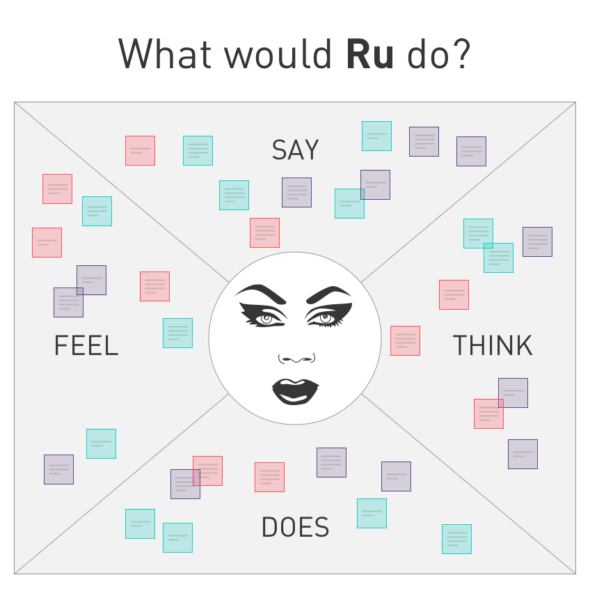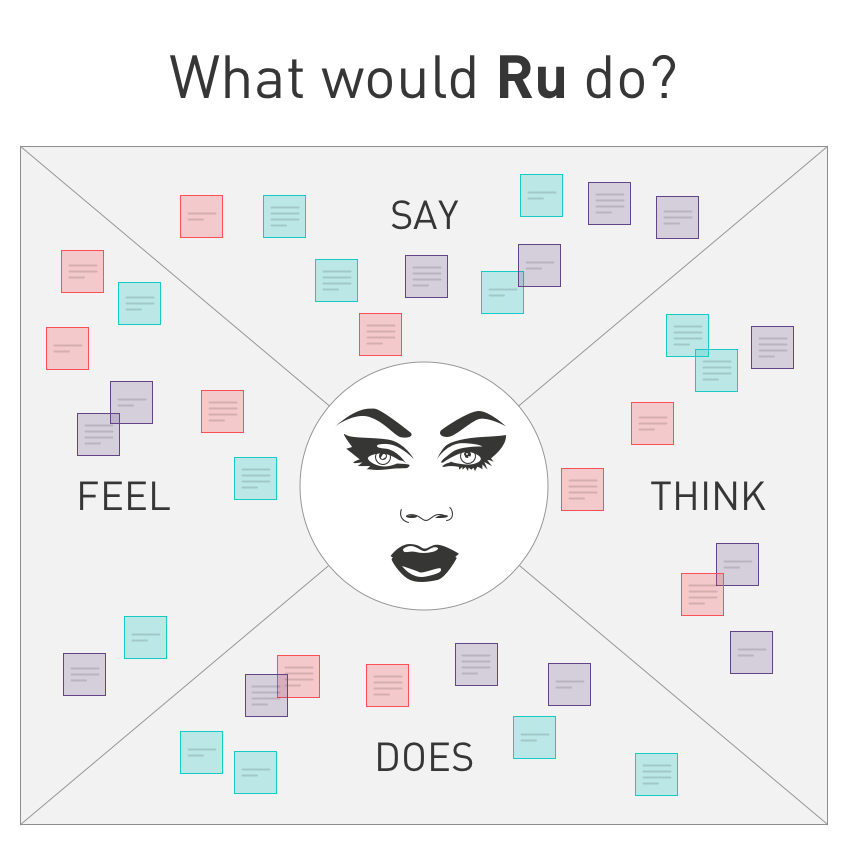
Ever wondered how Steve Jobs might tackle a problem? What if Angela Merkel were leading your project? How would Judge Judy get to the bottom of it? What would Trevor Noah say about that approach?
This activity, Alter Egos, helps explore different ideas through the lens of others and provides new perspectives.
This is part of our series on Design Thinking Methods and Activities. You’ll find a full list of posts in this series at the end of the page.
Alter Egos
| Primary Goal | To encourage a change of perspective |
| When to Use | When it’s time to shake up stagnant ideas |
| Time Required | 30-60 minutes |
| Number of Participants | 2-10+ |
| Who Should Participate? | Anyone on the project, especially those married prematurely to an idea, plan, or decision |
| Supplies | Sharpies, Post-its, and a large whiteboard |
1. Identify the Problem & Alter Ego
The best time to use this activity is when you find yourself or your team stuck on a problem or generating humdrum ideas. What makes it fun is that it removes limitations or governors on ideas.
To begin, first think about the problem you’re trying to solve. Then pair it with a corresponding alter ego.
Here are a couple of examples of problems and alter egos:
Problem: A medical device company wants elderly customers to buy monthly subscriptions for access to their mobile app.
Alter Ego: How might Betty White convince them to subscribe?
Problem: A residential waste management company wants to improve services, but doesn’t know how to set themselves apart from local competitors.
Alter Ego: How would Elon Musk disrupt the market?
Problem: Your company wants to share important info about a new insurance plan.
Alter Ego: How would John Oliver deliver the news?
Problem: A company selling bidet attachments for toilets isn’t sure how position the product to 20-somethings.
Alter Ego: Cardi B is running the show now. How would she describe the product to a younger audience?
2. Capture Feedback
You can make this portion of the activity as simple or complex as you’d like. The simple version would have participants capturing each quote, idea, or action step on a Post-it. Remember to frame each item from the perspective of the alter ego.
The complex version adds a bit more structure. Here’s a step-by-step guide:
- Write the problem statement on a whiteboard.
- Underneath that, write the name of the alter ego and the question you want them to answer.
- Print and post or draw a picture of the alter ego and post it to the board for added “oomph.”
- Draw four quadrants surrounding the alter ego’s name or image and write one of the following in each zone: Say, Think, Do, Feel.
- Have participants fill in each section with Post-its, framing all of their comments as if they were coming from the alter ego. In the example below, the Alter Ego is represented by RuPaul. So, in this case, participants would decide what RuPaul would say, think, feel, or do to solve this problem. This four-quadrant framework is often referred to as an Empathy Map.
- Finally, once all quadrants are filled in, review each Post-it and group like ones together to find common themes, concepts, or ideas.
- Oh, and don’t forget to laugh. This exercise can really loosen up a room and bring out the funny in folks.

Hopefully, this activity will encourage your team members to broaden their thinking, remove limitations, and shake it up a little.
Share a comment below if you’ve walked in an alter ego’s shoes.
Atomic’s Design Thinking Toolkit
- What Is Design Thinking?
- Your Design Thinking Supply List
- Activity 1 – The Love/Breakup Letter
- Activity 2 – Story Mapping
- Activity 3 – P.O.E.M.S.
- Activity 4 – Start Your Day
- Activity 5 – Remember the Future
- Activity 6 – Card Sorting
- Activity 7 – Competitors/Complementors Map
- Activity 8 – Difficulty & Importance Matrix
- Activity 9 – Rose, Bud, Thorn
- Activity 10 – Affinity Mapping
- Activity 11 – Speed Boat
- Activity 12 – Visualize The Vote
- Activity 13 – Hopes & Fears
- Activity 14 – I Like, I Wish, What If
- Activity 15 – How to Make Toast
- Activity 16 – How Might We…?
- Activity 17 – Alter Egos
- Activity 18 – What’s On Your Radar?
- Activity 19 – The Perfect Morning
- Activity 20 – 2×3
- Activity 21 – How Can I Help…?
- Activity 22 – Cover Story
- Activity 23 – Crazy 8s
- Activity 24 – Abstraction Ladder
- Activity 25 – Empathy Map
- Activity 26 – Worse Possible Idea
- Activity 27 – Pre-Project Survey
- Activity 28 – The Powers of Ten
- Activity 29 – SCAMPER
- Activity 30 – Design Studio
- Activity 31 – Forced Connections
This is an updated version of a post originally published in March 2019.

